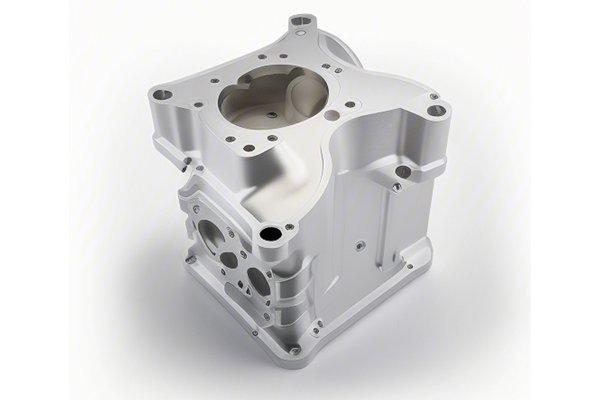Did you know that over 90% of manufacturers have turned to computerized technology for their prototyping processes? The rapid rise of CNC (Computer Numerical Control) machining has revolutionized how industries approach custom prototypes. One of the most popular methods in this technology is 3-axis CNC milling. But what exactly are the benefits, and why should they matter to your manufacturing process? This blog aims to explore the untapped potential of 3-axis CNC milling for custom prototypes, providing insights and solutions that can streamline production, enhance precision, and reduce costs.
What is 3-Axis CNC Milling?
Before delving into the benefits, it’s essential to understand what 3-axis CNC milling entails. This process utilizes a milling machine that moves a cutting tool along three different axes—X (horizontal), Y (vertical), and Z (depth). This ability to manipulate the cutting tool makes it perfect for creating intricate designs and custom prototypes from various materials, including metals, plastics, and composites.
The Importance of Custom Prototyping
Custom prototypes are critical in various industries, from aerospace to automotive to healthcare. They serve multiple purposes, such as:
Given their importance, having an efficient, cost-effective method for creating prototypes is invaluable.
Benefits of 3-Axis CNC Milling for Custom Prototypes
One of the most compelling benefits of 3-axis CNC milling is the precision it offers. The computer-controlled machinery operates with an exceptional level of accuracy—typically within 0.001 inches. This unparalleled accuracy is crucial when creating prototypes that must meet specific design criteria, ensuring that every piece matches the original design exactly.
Solution: For manufacturers looking to minimize errors and produce high-quality prototypes, investing in 3-axis CNC milling machines will significantly enhance precision.
In today’s fast-paced market, time is of the essence. 3-axis CNC milling can significantly reduce the production time for custom prototypes compared to traditional manual machining methods. Computer software can efficiently plan the machining process, allowing for quicker adjustments and optimizations.
Solution: Consider implementing 3-axis CNC technology into your production line to accelerate prototype development and speed up your time-to-market.
While the initial investment in CNC machines may seem high, the long-term cost savings are considerable. The speed and accuracy of 3-axis milling reduce material waste and labor costs, making it a more cost-effective solution in the long run.
Solution: By integrating 3-axis CNC milling for custom prototypes, businesses can realize savings on both material waste and labor while maintaining high accuracy in their prototypes.
3-axis CNC milling accommodates an extensive range of materials and design complexities. Whether you’re working with aluminum, plastic, or even advanced composites, this milling method can achieve the desired outcome. Furthermore, complex geometries and intricate designs can be easily programmed into the computer, making it more versatile than manual machining.
Solution: Embrace the design flexibility of 3-axis CNC milling to create high-quality, customized prototypes that meet project specifications without compromising on aesthetics or function.

Changing tooling and setups in traditional machining can be time-consuming, often resulting in costly delays. Fortunately, 3-axis CNC milling systems can quickly adapt to new designs with minimal changeover time.
Solution: Reduce downtime between prototype runs by implementing a 3-axis CNC system that minimizes setup requirements and maximizes efficiency.
With computer control, manufacturers can easily implement rigorous quality control checks throughout the machining process. Automation allows for consistent quality across prototypes, ensuring all pieces meet the specified tolerances.
Solution: Strengthen your quality assurance processes by using 3-axis CNC milling, which enables real-time monitoring and adjustments to maintain high-quality standards.
With advanced CNC technology, there’s less need for skilled labor to operate machinery manually. This not only lowers labor costs but also minimizes the risks associated with human error.
Solution: By investing in CNC milling, manufacturers can reduce their reliance on manual labor while maintaining high production standards.
Challenges and Considerations
While there are numerous benefits to using 3-axis CNC milling for custom prototypes, it’s not without challenges. Here are some common obstacles to consider:
Solution: To mitigate these challenges, consider exploring financing options for CNC equipment and invest in training programs for your staff to ensure a successful transition.
Industry Applications
The applicability of 3-axis CNC milling extends across multiple sectors, from aerospace and automotive to medical device manufacturing. Here are some industry-specific examples that showcase the versatility of this technology:
3-axis CNC milling represents a significant breakthrough in custom prototyping. Its unmatched precision, fast production speed, versatility, and cost-effectiveness provide compelling advantages that cannot be overlooked.
In order to stay competitive in an ever-changing market, manufacturers should consider making the shift to 3-axis CNC milling for their prototyping needs. By doing so, they can improve efficiency, reduce costs, and most importantly, deliver high-quality products that meet customer expectations.
So, if you’re still relying on traditional methods for high-precision prototypes, now might be the perfect time to evaluate the transition. In a world where every second and cent counts, the adoption of 3-axis CNC milling could mean the difference between being a market leader or falling behind. This blog serves as a valuable resource; let it guide your journey towards leveraging the benefits of technology in your manufacturing processes.






